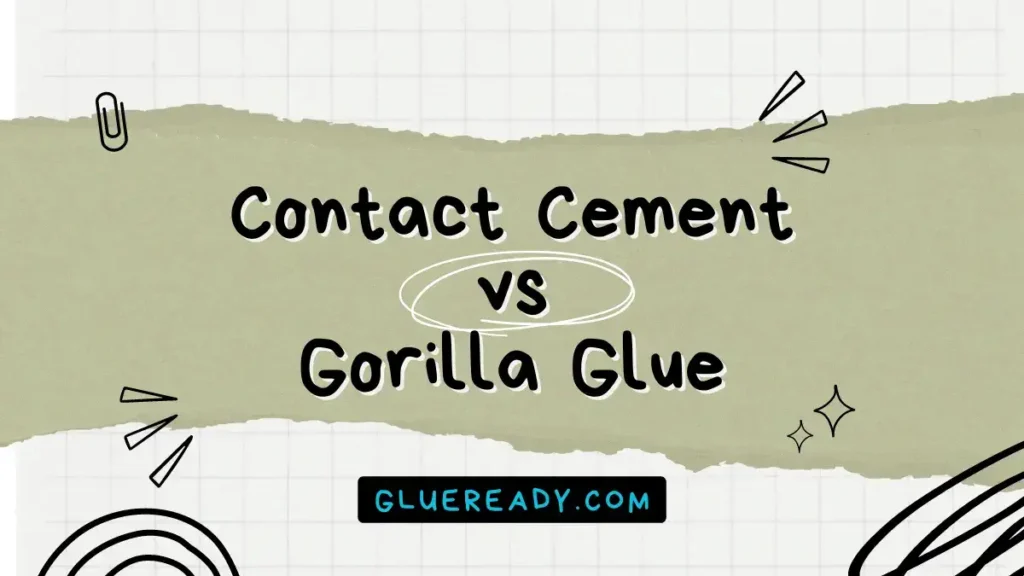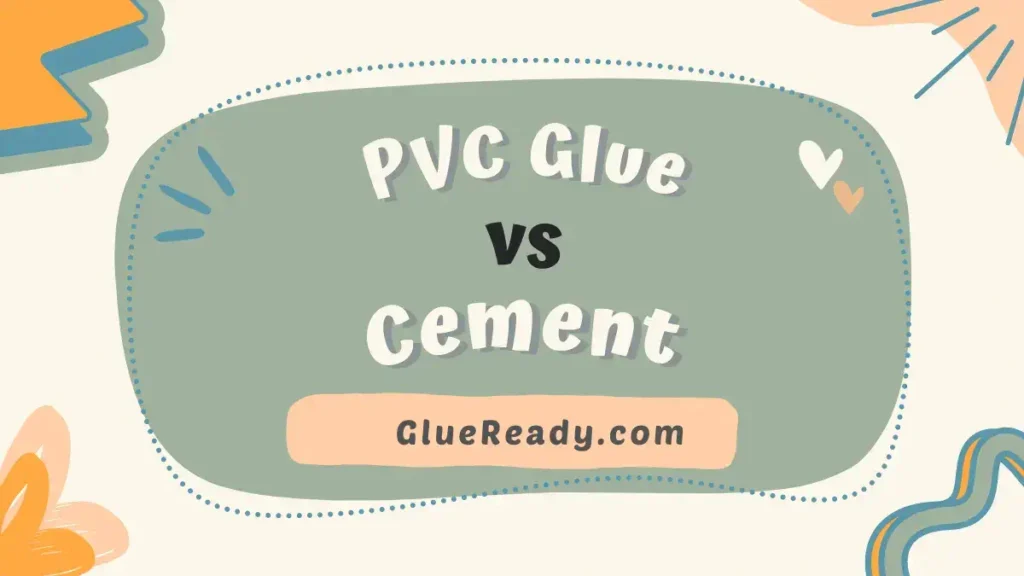Goop Glue vs E6000 | In-Depth Comparison

When it comes to heavy-duty adhesives, two popular contenders in the market are Goop Glue and E6000. These versatile adhesives are known for their strength, durability, and wide range of applications.
Both of these products are popular among crafters, DIYers, and professionals who need a reliable glue for their projects. Goop glue is more flexible and can be used as a sealant while E6000 is more rigid and can provide more stability.
In the battle between Goop Glue vs E6000, I will help you make an informed decision for your adhesive needs by comparing them.
Read More: E6000 vs Superglue
Overview of Goop Glue
Goop glue is an all-purpose glue that can stick, seal, and repair almost anything. It is UV-resistant, weatherproof, and can be used as a sealant.
It has a thick consistency that allows it to fill gaps and cracks. It takes 2-10 minutes to set and 24-72 hours to cure. Without mixing or clamping, it may be applied straight to the surfaces.
Goop glue is compatible with metal, glass, plastics, leather, and many other materials. It is a strong, flexible, and durable adhesive that can withstand harsh conditions.
It can be used for both indoor and outdoor projects, such as sealing leaks, repairing shoes, making jewelry, and more.

Overview of E6000
E6000 is an industrial-strength glue that can bond to many materials as well. It is self-leveling, meaning it spreads evenly over the surfaces.
It has a high resistance to water, chemicals, acids, and dilute bases. It takes 10 minutes to set and 24-72 hours to cure. It can be applied with a nozzle or a syringe for precise application.
E6000 is compatible with metal, vinyl, wood, masonry, rubber, plastics, and more. It is a fast-bonding and hardening adhesive that can provide a stable and supportive bond.
It can be used for projects that require more rigidity or shape, such as bonding metal, repairing furniture, making models, and more.

Goop Glue vs E6000 Comparison Table
| Property | Goop Glue | E6000 |
| Type | All-purpose glue | Industrial glue |
| Setting time | 2-10 minutes | 10 minutes |
| Curing time | 24-72 hours | 24-72 hours |
| Flexibility | High | Low |
| Consistency | Thick | Self-leveling |
| Compatible Materials | Metal, glass, plastics, leather, etc. | Metal, vinyl, wood, masonry, rubber, plastics, etc. |
| Application Method | Directly on surfaces | Nozzle or syringe |
| Resistance | UV-resistant, weatherproof | Water-resistant, chemical-resistant |
Detailed Comparison Between Goop Glue and E6000
Let’s dive deeper into a detailed comparison between Goop Glue and E6000.
Strength and Bonding Power
Both Goop Glue and E6000 are known for their exceptional bonding strength, allowing them to hold together a variety of materials.
However, E6000 is generally regarded as having a stronger bond, making it suitable for heavy objects or applications that require high tensile strength.
If you’re working on a project that demands an extremely robust bond, E6000 might be the preferred choice.
Versatility
When it comes to versatility, Goop Glue has a slight edge. It offers different specialized formulas, such as Goop Household, Goop Marine, Goop Automotive, and Goop Plumbing, designed for specific applications.
It is excellent for a number of materials, including metal, glass, wood, fabric, ceramic, and plastic.
Drying Time
Goop Glue generally dries faster compared to E6000, allowing for quicker project completion.
If you’re looking for a more time-efficient adhesive, Goop Glue might be the better choice, especially if you have tight deadlines or need to move on to the next phase of your project promptly.
Heat Resistance
When it comes to withstanding high temperatures, E6000 has the upper hand. It offers better heat resistance compared to Goop Glue, making it suitable for applications that involve exposure to heat or extreme temperatures.
If you’re working on a project where heat resistance is crucial, E6000 would be the recommended option.
Odor and Toxicity
Goop Glue is known for having a strong smell, which some users may find unpleasant. E6000, on the other hand, has a milder odor. If you are sensitive to strong smells or working in a poorly ventilated area, you might prefer E6000 for its comparatively less offensive odor.
Transparency
If transparency is a critical factor for your project, E6000 offers an advantage. Once fully cured, E6000 dries clear, making it virtually invisible on transparent or color-sensitive materials.
Goop Glue, while it dries relatively clear, may not provide the same level of transparency as E6000.
Which One Should You Choose? Goop Glue or E6000?
Both goop glue and E6000 are excellent adhesives that can provide a strong and waterproof bond. However, they have some differences in their features and performance that may make them more suitable for different projects.
- If you need an adhesive that can stick to virtually any surface and can be used as a sealant, you may prefer goop glue.
- If you need an adhesive that can bond to metal, vinyl, wood, masonry, and other hard materials, you may prefer the E6000.
- If you need an adhesive that can fill gaps and cracks and can stretch without breaking, you may prefer goop glue.
- If you need an adhesive that can spread evenly over the surfaces and can provide more stability and support, you may prefer the E6000.
Read More: How Strong Is Fabric Glue?
Is E6000 The Same as Goop?
No, E6000 is not the same as Goop. They are both strong, flexible, and versatile adhesives, but they have some differences in their compatible materials, drying time, resistance, odor, and toxicity.
Is Goop Adhesive Waterproof?
Yes, goop adhesive is waterproof. It provides a waterproof bond that remains secure even when exposed to water.
Final Thoughts
Both Goop Glue and E6000 are formidable heavy-duty adhesives that have proven their worth in various industries and projects.
If you need a versatile adhesive that dries quickly and can withstand water exposure, Goop Glue may be the right choice for you.
On the other hand, if you require superior bonding strength and excellent heat resistance, E6000 might be the better option.
I hope this goop glue vs E6000 comparison helped you understand the differences between them and choose the best one for your projects.







